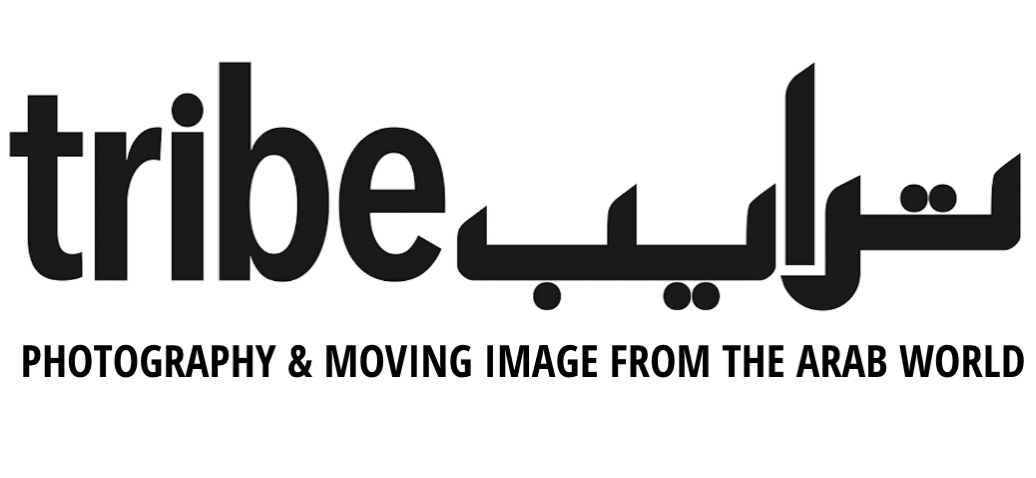Sama Alshaibi: Reorienting Our Gaze
Choreographies of an art practice
Sama Alshaibi, Fatnis al-Jazirah (Fantasy Island), from the series Silsila (2014) Archival print. Courtesy of the artist.
With text by Dr Woodman Taylor, art historian and ethnomusicologist.
Through exposing her own subjectivity, both in terms of her multiple points-of-view as an Iraqi-Palestinian woman practicing in the United States but also in her enactments as the subject in her own image-based work, Sama Alshaibi aims to reorient her audiences’ gaze. Born in Basra, raised in West Asia and educated in the arts first at Columbia College in Chicago and then at the University of Colorado in Boulder, Alshaibi has negotiated her identity across divergent cultural and national constructs. This familiarity with both sides of the usual East / West dichotomy allows Alshaibi to visually critique, up-end and then reconfigure the mostly male-centered and Orientalist framings of West Asia and particularly of Arab women. By literally taking ownership of the image through her own body, while arranging the setting and framing of her photographs and videos, Alshaibi becomes an activist advocating for a reorientation of her viewers’ gaze while creating new resonance generated through images of her staged performances.
Alshaibi highlights this importance of performance in her practice within an interview:
I think what I really am, is a performer. I started off in drama and music: singing opera, acting and dancing... when I started studying photography and video, I was able to examine my own story, my own family and the political conditions of the world that intersected my own life. (Sand Rushes In, 2015: 104)
In her initial multi-year project Silsila which was exhibited widely as an installation with photographs and video, Alshaibi activates her own silsila, or lineage, connecting the arid geographies of Arizona with desertscapes from North Africa and West Asia. These then become the staging for her own performative acts, from lyrically connecting and later disconnecting hands with her double to opening a pomegranate and then distributing its seeds on fertile ground. There are also juxtapositions of seascapes with dried out stream beds, raising ecological concerns which were cued to the project’s initial installation for the Maldives Pavilion at the 55th Venice Biennale in 2013. The Arabic titles for work in this project often have Sufi or philosophical resonance, such as mandala like Al-Manatiq al-Khaas bi-Wijhat Nazarinaa that translates as ‘the logic of our gaze’ which becomes a critique of the very act of viewing. The most striking images from the series capture Alshaibi half submersed in water with a prayer like gesture. Taken from behind— at times with palm trees at the distant shore perfectly reflected on a mirror-like pool, it is as if we are witness to her act of praying. By giving us the subject position of a rear view, not only does she negate nor engage our gaze, she perhaps invites us to join in her supplication.
Alshaibi’s Staging the Imagined, which premiered at Ayyam Gallery Dubai in September 2019, is her most recent project, which again took many years for its development and final realization. In her project, not only does Alshaibi deconstruct the Orientalist framing of Arab women as exotic objects in the harem created by Western painters and then photographers, she actually learned the historic photographic processes of albumen and photogravure with copper plates used by colonial cameramen to create her own alternative images projecting her own counter narrative. In the series of sepia prints, Alshaibi takes the subject position of an Arab woman, where she performs as if a carrier of water, or purveyor with stacks of food vessels, or a selection of beverages, or carrying fishing nets and even baggage. Yet the Arab women she activates are not submissive as those depicted in Orientalist modes, Alshaibi shows them as strong workers who resist their oppressors with their resolute return gazes. The resistance of these strong Arab women is brought into the realm of contemporary politics with Alshaibi’s monumental color silkscreen of herself as the legendary Palestinian revolutionary Leila Khaled, with red keffiyeh and an ever-ready AK-47. Through her Staging the Imagined Alshaibi confronts us with the need for us to reorient our viewing and framings of not only Arab women but of the entire West Asia region as well as of any previously orientalized ‘others.’
Reference:
Sand Rushes In (New York: Aperture, 2015), edited and with an interview by Isabelle Ellaheh Hughes, foreward by Salwa Mikdadi and essay by Alfredo Cramerotti.
Taylor, Woodman (2020). Sama Alshaibi: Reorienting Our Gaze. Tribe, 10, 72-85.



